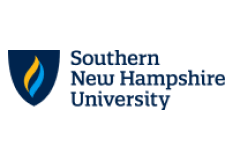Mathematical Sciences Schools in Nebraska
In 2022-2023, 237 students earned their Mathematical Sciences degrees in NE.
In this state, Mathematical Sciences is the 22nd most popular major out of a total 532 majors commonly available.
Featured General Mathematics Programs
Learn about start dates, transferring credits, availability of financial aid, and more by contacting the universities below.
If you have a knack for mathematics and an interest in learning more, study online to achieve your career goals at Southern New Hampshire University. Our mathematics degree can help you enhance your mathematical abilities, including reasoning and problem-solving in three areas: analysis, algebra and statistics.
BA in Mathematics - Applied Mathematics
Put mathematical concepts to work to solve today's most complex real-world problems by studying applied mathematics with this specialized online bachelor's from Southern New Hampshire University.
Featured General Mathematics Programs
Learn about start dates, transferring credits, availability of financial aid, and more by contacting the universities below.
If you have a knack for mathematics and an interest in learning more, study online to achieve your career goals at Southern New Hampshire University. Our mathematics degree can help you enhance your mathematical abilities, including reasoning and problem-solving in three areas: analysis, algebra and statistics.
BA in Mathematics - Applied Mathematics
Put mathematical concepts to work to solve today's most complex real-world problems by studying applied mathematics with this specialized online bachelor's from Southern New Hampshire University.
Education Levels of Mathematical Sciences Majors in Nebraska
Mathematical Sciences majors in the state tend to have the following degree levels:
| Education Level | Number of Grads |
|---|---|
| Bachelor’s Degree | 203 |
| Master’s Degree | 22 |
| Doctor’s Degree (Research / Scholarship) | 10 |
| Doctor’s Degree (Professional Practice) | 10 |
| Doctor’s Degree (Other) | 10 |
| Post-Master’s Certificate | 2 |
| Postbaccalaureate Certificate | 2 |
Gender Distribution
In Nebraska, a mathematical sciences major is more popular with men than with women.

Racial Distribution
The racial distribution of mathematical sciences majors in Nebraska is as follows:
- Asian: 5.9%
- Black or African American: 3.0%
- Hispanic or Latino: 5.1%
- White: 66.7%
- Non-Resident Alien: 11.0%
- Other Races: 8.4%

Jobs for Mathematical Sciences Grads in Nebraska
8,710 people in the state and 1,205,580 in the nation are employed in jobs related to mathematical sciences.

Wages for Mathematical Sciences Jobs in Nebraska
A typical salary for a mathematical sciences grad in the state is $67,080, compared to a typical salary of $92,600 nationwide.

Most Popular Mathematical Sciences Programs in NE
There are 10 colleges in Nebraska that offer mathematical sciences degrees. Learn about the most popular 10 below:
16 to 1 is the student to faculty ratio. Seeking financial aid? At this school, 95% of students receive it. The average student takes 4.42 years to complete their degree at UNL.
Request Information55% of the teachers are full time. This public school has an average net price of $12,670. 92% of students are awarded financial aid at this school.
Request InformationStudents who attend this private institution pay an average net price of $26,946. The average student takes 4.62 years to complete their degree at Bellevue University. The full-time teacher rate is 12%.
Request Information100% of students get financical aid. It takes the average student 4.58 years to graduate. 67% of the teachers are full time.
Request Information16 to 1 is the student to faculty ratio. It takes the average student 4.45 years to graduate. Students who attend this public school pay an average net price of $15,684.
Request Information69% of the teachers are full time. 11 to 1 is the student to faculty ratio. 100% of students get financical aid.
Request InformationMost students complete their degree in 4.16 years. An average student at NWU will pay a net price of $23,117. 11 to 1 is the student to faculty ratio.
Request InformationStudents enjoy a student to faculty ratio of 10 to 1. An average student at Doane Crete will pay a net price of $24,295. Of all the teachers who work at the school, 39% are considered full time.
Request InformationStudents enjoy a student to faculty ratio of 12 to 1. The average student takes 4.18 years to complete their degree at Hastings. An average student at Hastings will pay a net price of $21,919.
Request Information38% of the teachers are full time. Students who attend this public school pay an average net price of $9,189. The student to faculty ratio is 17 to 1.
Request InformationExplore Major by State
Alabama
Arkansas
Connecticut
Florida
Idaho
Iowa
Louisiana
Massachusetts
Mississippi
Nebraska
New Jersey
North Carolina
Oklahoma
Rhode Island
Tennessee
Vermont
West Virginia
View Nationwide Mathematical Sciences Report
References
More about our data sources and methodologies.









